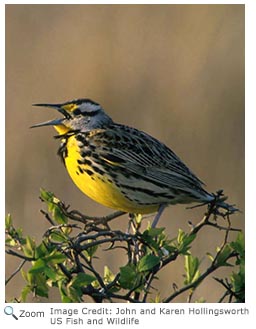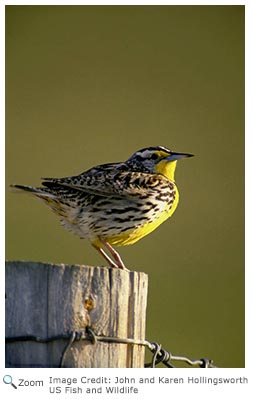Western Meadowlark- Sturnella neglecta |
|||||||||||
Description The western meadowlark is very similar to the eastern meadowlark. The western meadowlark's yellow color extends a little further onto its cheek. The songs of the two meadowlarks are the easiest way to tell them apart. The song of the western meadowlark is a series of flute-like gurgling notes that go down the scale. The eastern meadowlark's call is a simpler series of whistles. Range | HabitatThe western meadowlark lives in meadows, plains, prairies, and other open grasslands. DietThe meadowlark's diet is mostly insects like caterpillars, and grasshoppers, although it sometimes eats seeds. Life Cycle
Behavior |
||||||||||
Audio Credit: xeno-canto.org Todd Wilson |
|||||||||||

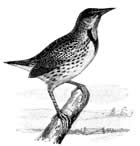
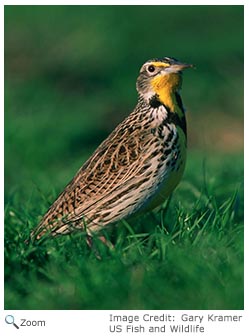
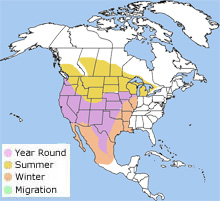 The western meadowlark is a short-distance
The western meadowlark is a short-distance 